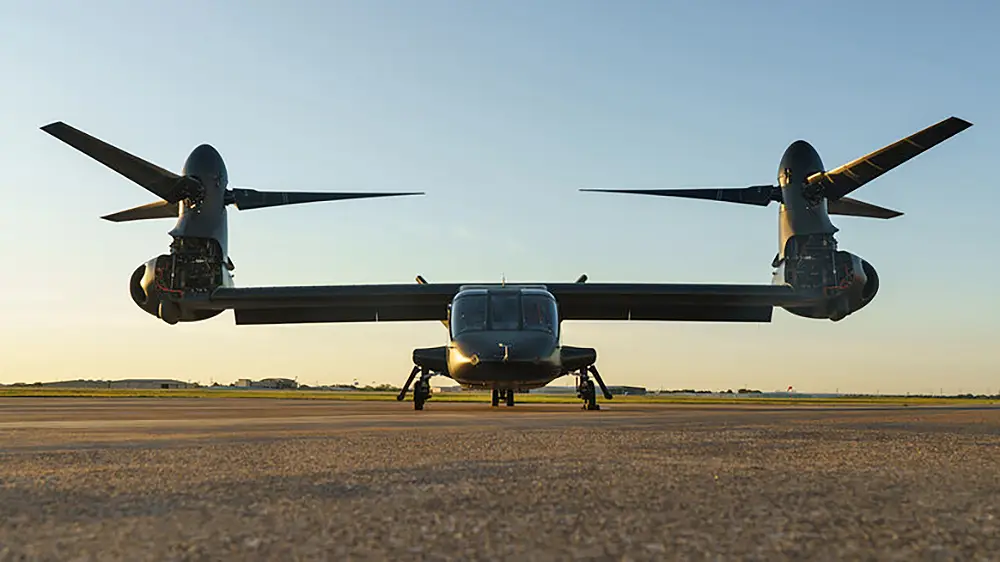
For over half a century, U.S. Army air assault missions have relied on reliable workhorses like the UH-60 Black Hawk and the CH-47 Chinook. They’ve deployed soldiers into combat zones, performed rescues, and rearmed front lines in nearly every major conflict since Vietnam. They are as dependable and long-lasting as anyone can be, but as the nature of the fighting evolves and operations extend further distances and faster tempos, the Army needs something more than what its older fleet has to offer.

That next step is the Bell V-280 Valor—a sleek, high-speed tiltrotor aircraft designed to revolutionize the way the Army moves troops and equipment through the air. As part of the Future Long-Range Assault Aircraft program, the V-280 is a leap beyond what vertical lift platforms are capable of. It’s not just a replacement for old helicopters; it’s a revolution in how the Army thinks about air mobility, distance, and rapid response anywhere in the world.

Today’s battlefield requires speed, stamina, and survival that it has never before required. Traditional helicopters, although dependable, are constrained by limited ranges and slower cruise speeds. Operations today can encompass hundreds of miles, often over uncertain territory and in enemy airspace. That’s where the Valor shines—able to travel enormous distances on one flight, staying at high speeds, and functioning well without continual refueling or logistics stops. The Army needed something that would be able to keep up with the pace of contemporary warfare, and Bell’s design gave them just that.

Not like traditional rotorcraft, the V-280 is a tiltrotor aircraft—its enormous rotors can swivel forward, enabling it to switch between vertical lift and high-speed horizontal flight with ease. This gives it a cruising speed of around 520 kilometers per hour, nearly twice that of the Black Hawk, and an operational combat range exceeding 900 kilometers. What makes it stand out as especially innovative is the way its rotors fly independently of the engines. Instead of turning the entire engine assembly like the V-22 Osprey, the Valor merely tilts the driveshafts and propellers. This simple design saves weight, improves reliability, and makes field maintenance easier. Paired with a lightweight composite airframe, digital fly-by-wire flight controls, and open software architecture allowing future upgrades, the Valor was designed with tomorrow’s missions already considered.

After years of development and testing, the U.S. Army officially chose the V-280 in December 2022 over Sikorsky’s Defiant X. What tipped the balance were its greater range, faster speed, and more advanced digital design—key traits for future missions. Once it was chosen, the development contract was awarded to Bell Textron, which began the transition to full-scale production. The program had reached its engineering and manufacturing phase by mid-2024, a milestone in the FLRAA initiative.

Six flight test vehicles will be produced initially on the plans, with the initial flight of the aircraft set for 2026. Assuming all goes as planned, limited production will begin in 2028, and operational fielding by 2030. In anticipation of this new age of Army aviation, Bell is also building a massive 447,000-square-foot factory in Fort Worth, Texas, to build the major components of the Valor.

What is most exciting about the V-280 is the way it can reshape the Army’s capability to conduct air assault operations. The aircraft is the backbone of a new concept of operation known as Large-Scale, Long-Range Air Assault, or L2A2. That entails airlifting an entire Brigade Combat Team hundreds of miles deep behind enemy lines in one night—something that would take days of basing, planning, and refueling stops today. In real-world training exercises, moving a BCT 575 miles with helicopters at today’s rate took three nights, two in-between bases, and nearly a thousand support troops. With the Valor, the same mission could be accomplished in one night, with much fewer logistics requirements, fewer refueling stops, and an overall smaller footprint. That’s not just a measure of velocity—it’s a game changer in survivability and effectiveness.

One of the secrets to the success of the program is the Army’s close involvement in the design of the aircraft itself. Soldiers—infantrymen, pilots, crew chiefs, and mechanics—were all part of the design process from the beginning. They made suggestions by hands-on testing and design feedback sessions referred to as “soldier touch points” on everything from cockpit ergonomics to troop seating and cabin arrangement. Direct feedback ensured the Valor wasn’t just being built for the Army, but with the Army.

The aircraft’s advanced systems give it a definitive survivability and flexibility edge. Its range enables missions to be executed from safer, more secure bases several hundred miles behind front-line threats. Its sensor, digital mission, and defensive electronics capacity enable it to survive in threat-dense environments. Redundant parts are employed in its design, so even when it is damaged, it can typically keep flying. And because its electronics have a modular open-systems philosophy, new changes—new sensors, weapons, or software—can be slipped in with ease without major redesigns.

Still, while the V-280 will be at the tip of the Army’s future air assault force, it won’t be replacing the Black Hawk or other current helicopters anytime soon. Instead, the Army is using a variation of a stepped transition, maintaining a mixed fleet for years as production scales up and units gain operating experience.

In many ways, the Bell V-280 Valor is not only a new airplane—it’s a glimpse at how the U.S. Army is preparing for tomorrow. With its unmatched range, speed, and versatility, it offers an example of how the forces of the future will move, fight, and react. The Valor is not just designed to get ahead of today’s challenges—it’s designed to stay ahead of them for decades to come, so that the Army can act faster, hit farther, and keep its edge in the fights of tomorrow.
